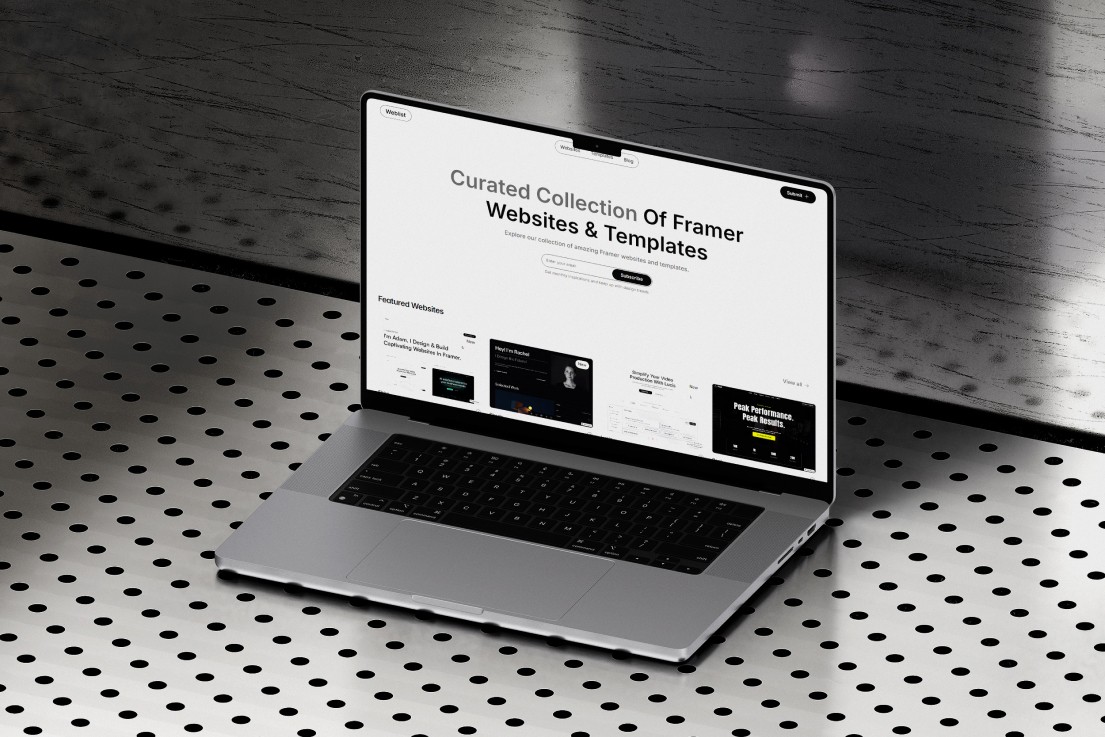Product Designer
I design thoughtful UX so users don’t have to feel lost in the interface
With 4+ years of UX experience in HealthTech, EdTech, and Enterprise SaaS, I design thoughtful, user-friendly products. With an MS in HCI and a background in Computer Science, I bridge design and development to turn complex ideas into clear, scalable solutions.
I stay ahead of trends, integrating the latest design principles and technologies to help businesses establish a strong online presence.
12+
Years of Experience
12+
Years of Experience
12+
Years of Experience
40+
Projects Completed
40+
Projects Completed
40+
Projects Completed
30+
Satisfied Clients
30+
Satisfied Clients
30+
Satisfied Clients
My Services
Web Design
Web Development
Branding
Visual Identity
E-commerce
Landing Pages
Web Design
Web Development
Branding
Visual Identity
E-commerce
Landing Pages
Web Design
Web Development
Branding
Visual Identity
E-commerce
Landing Pages
1.
Custom Web Design
Starts at
$2,500
3-6 weeks
I design sleek, user-friendly websites tailored to your brand’s identity and goals. From wireframes to final launch, every detail is crafted to ensure a seamless user experience and high engagement.
Unique, responsive design
Mobile & SEO-friendly structure
Optimized for speed & performance
Designed for conversions & engagement
1.
Custom Web Design
Starts at
$2,500
3-6 weeks
I design sleek, user-friendly websites tailored to your brand’s identity and goals. From wireframes to final launch, every detail is crafted to ensure a seamless user experience and high engagement.
Unique, responsive design
Mobile & SEO-friendly structure
Optimized for speed & performance
Designed for conversions & engagement
1.
Custom Web Design
Starts at
$2,500
3-6 weeks
I design sleek, user-friendly websites tailored to your brand’s identity and goals. From wireframes to final launch, every detail is crafted to ensure a seamless user experience and high engagement.
Unique, responsive design
Mobile & SEO-friendly structure
Optimized for speed & performance
Designed for conversions & engagement
2.
Landing Page Design
Starts at
$1,200
1-3 weeks
A high-impact landing page designed to capture leads, drive sales, or promote your campaign. Built with a conversion-focused strategy to maximize your ROI.
Clean, persuasive design
Fast-loading & mobile-friendly
A/B testing & conversion optimization
Seamless lead capture integration
2.
Landing Page Design
Starts at
$1,200
1-3 weeks
A high-impact landing page designed to capture leads, drive sales, or promote your campaign. Built with a conversion-focused strategy to maximize your ROI.
Clean, persuasive design
Fast-loading & mobile-friendly
A/B testing & conversion optimization
Seamless lead capture integration
2.
Landing Page Design
Starts at
$1,200
1-3 weeks
A high-impact landing page designed to capture leads, drive sales, or promote your campaign. Built with a conversion-focused strategy to maximize your ROI.
Clean, persuasive design
Fast-loading & mobile-friendly
A/B testing & conversion optimization
Seamless lead capture integration
3.
Website Redesign & Optimization
Starts at
$2,000
2-5 weeks
Revamp your outdated website with a fresh, modern design that enhances user experience and boosts performance. I analyze and refine key elements to improve engagement, speed, and conversions.
Modern & responsive redesign
UI/UX improvements for better navigation
SEO optimization for better rankings
Speed & performance enhancements
3.
Website Redesign & Optimization
Starts at
$2,000
2-5 weeks
Revamp your outdated website with a fresh, modern design that enhances user experience and boosts performance. I analyze and refine key elements to improve engagement, speed, and conversions.
Modern & responsive redesign
UI/UX improvements for better navigation
SEO optimization for better rankings
Speed & performance enhancements
3.
Website Redesign & Optimization
Starts at
$2,000
2-5 weeks
Revamp your outdated website with a fresh, modern design that enhances user experience and boosts performance. I analyze and refine key elements to improve engagement, speed, and conversions.
Modern & responsive redesign
UI/UX improvements for better navigation
SEO optimization for better rankings
Speed & performance enhancements
1.
Discovery & Strategy
We start by understanding your business, goals, and target audience. This phase includes research, competitor analysis, and defining the project scope to ensure a clear direction.
1.
Discovery & Strategy
We start by understanding your business, goals, and target audience. This phase includes research, competitor analysis, and defining the project scope to ensure a clear direction.
1.
Discovery & Strategy
We start by understanding your business, goals, and target audience. This phase includes research, competitor analysis, and defining the project scope to ensure a clear direction.
2.
Wireframing & UX Design
Before jumping into visuals, I create wireframes to map out the structure and user flow. This ensures an intuitive and seamless experience for visitors.
2.
Wireframing & UX Design
Before jumping into visuals, I create wireframes to map out the structure and user flow. This ensures an intuitive and seamless experience for visitors.
2.
Wireframing & UX Design
Before jumping into visuals, I create wireframes to map out the structure and user flow. This ensures an intuitive and seamless experience for visitors.
3.
Visual Design & Branding
This is where your website comes to life. Using your brand identity, I design a visually compelling interface with the perfect balance of aesthetics and usability.
3.
Visual Design & Branding
This is where your website comes to life. Using your brand identity, I design a visually compelling interface with the perfect balance of aesthetics and usability.
3.
Visual Design & Branding
This is where your website comes to life. Using your brand identity, I design a visually compelling interface with the perfect balance of aesthetics and usability.
4.
Development & Implementation
Once the design is approved, I build your website using modern, responsive technologies. I ensure that it’s optimized for speed, SEO, and a flawless user experience across all devices.
4.
Development & Implementation
Once the design is approved, I build your website using modern, responsive technologies. I ensure that it’s optimized for speed, SEO, and a flawless user experience across all devices.
4.
Development & Implementation
Once the design is approved, I build your website using modern, responsive technologies. I ensure that it’s optimized for speed, SEO, and a flawless user experience across all devices.
My Clients
"David completely transformed our website! His attention to detail and user experience expertise made our site not only beautiful but also highly functional. Since launching, our traffic has increased, and customers are staying longer. Highly recommend!"

Sarah L.
4.9/5
E-commerce Business Owner
Working with David was a game-changer. He understood our brand vision perfectly and created a website that not only looks amazing but also performs exceptionally well. His professionalism and creativity are unmatched!"

Michael T.
4.9/5
Startup Founder
"David’s web design skills are top-notch! He built a stunning, mobile-friendly site for us that loads fast and ranks well on Google. Our clients love the new design, and we've seen a boost in leads. Thank you, David!"

Emily R.
4.9/5
Marketing Director
"I couldn't be happier with my new website! David took my ideas and turned them into a modern, easy-to-navigate site that truly represents my brand. He made the whole process seamless and stress-free."

James P.
4.9/5
Photographer
"David exceeded all our expectations! His ability to blend aesthetics with functionality is incredible. Our website now provides a seamless experience for users, and our engagement has skyrocketed. He’s the best in the business!"

Anna W.
4.9/5
Fitness Coach
"From start to finish, David was fantastic to work with. He not only delivered a stunning design but also ensured our site was optimized for SEO and performance. We’ve seen a significant increase in conversions since launching. Can’t recommend him enough!"

Robert M.
4.9/5
Tech Consultant
"David completely transformed our website! His attention to detail and user experience expertise made our site not only beautiful but also highly functional. Since launching, our traffic has increased, and customers are staying longer. Highly recommend!"

Sarah L.
4.9/5
E-commerce Business Owner
Working with David was a game-changer. He understood our brand vision perfectly and created a website that not only looks amazing but also performs exceptionally well. His professionalism and creativity are unmatched!"

Michael T.
4.9/5
Startup Founder
"David’s web design skills are top-notch! He built a stunning, mobile-friendly site for us that loads fast and ranks well on Google. Our clients love the new design, and we've seen a boost in leads. Thank you, David!"

Emily R.
4.9/5
Marketing Director
"I couldn't be happier with my new website! David took my ideas and turned them into a modern, easy-to-navigate site that truly represents my brand. He made the whole process seamless and stress-free."

James P.
4.9/5
Photographer
"David exceeded all our expectations! His ability to blend aesthetics with functionality is incredible. Our website now provides a seamless experience for users, and our engagement has skyrocketed. He’s the best in the business!"

Anna W.
4.9/5
Fitness Coach
"From start to finish, David was fantastic to work with. He not only delivered a stunning design but also ensured our site was optimized for SEO and performance. We’ve seen a significant increase in conversions since launching. Can’t recommend him enough!"

Robert M.
4.9/5
Tech Consultant
"David completely transformed our website! His attention to detail and user experience expertise made our site not only beautiful but also highly functional. Since launching, our traffic has increased, and customers are staying longer. Highly recommend!"

Sarah L.
4.9/5
E-commerce Business Owner
Working with David was a game-changer. He understood our brand vision perfectly and created a website that not only looks amazing but also performs exceptionally well. His professionalism and creativity are unmatched!"

Michael T.
4.9/5
Startup Founder
"David’s web design skills are top-notch! He built a stunning, mobile-friendly site for us that loads fast and ranks well on Google. Our clients love the new design, and we've seen a boost in leads. Thank you, David!"

Emily R.
4.9/5
Marketing Director
"I couldn't be happier with my new website! David took my ideas and turned them into a modern, easy-to-navigate site that truly represents my brand. He made the whole process seamless and stress-free."

James P.
4.9/5
Photographer
"David exceeded all our expectations! His ability to blend aesthetics with functionality is incredible. Our website now provides a seamless experience for users, and our engagement has skyrocketed. He’s the best in the business!"

Anna W.
4.9/5
Fitness Coach
"From start to finish, David was fantastic to work with. He not only delivered a stunning design but also ensured our site was optimized for SEO and performance. We’ve seen a significant increase in conversions since launching. Can’t recommend him enough!"

Robert M.
4.9/5
Tech Consultant

Let's bring your vision to life —
I’m here to help you create something exceptional together!
Let's Work Together!
Designed
By
Naureen

Let's bring your vision to life — I’m here to help you create something exceptional together!
Let's Work Together!
Designed
By
Naureen










